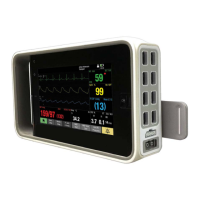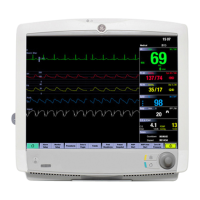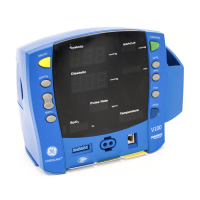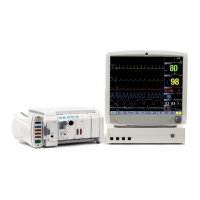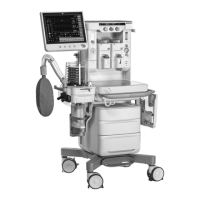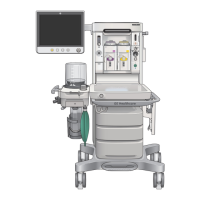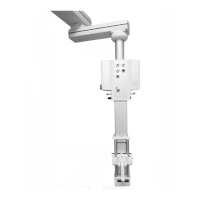SpO₂
●OnlyMasimoRDSET,M-LNCS,LNCS,andLNOPsensorsaresupported.Masimo
RDSET,M-LNCS,LNCS,orLNOPsensorsnon-invasivelymeasurepulserateand
theamountofoxygenatedhemoglobin.Usethefollowingguidelineswhenusing
MasimoRDSET,M-LNCS,LNCS,orLNOPsensors:
■Readthesensordirectionsbeforeuse.
■OnlyusesensorswithMasimoSETtechnology.
■Donotusedamagedsensors.
■Donotuseasensorwithexposedopticalcomponents.
■RefertothecleaninginstructionsinthedirectionsforuseforreusableMasimo
RDSET,M-LNCS,LNCS,orLNOPsensors.
AdditionalinformationforMasimoSETtechnology
NOIMPLIEDLICENSE:Possessionorpurchaseofthisdevicedoesnotconveyany
expressorimpliedlicensetousethedevicewithunauthorizedreplacementparts
whichwould,alone,orincombinationwiththisdevice,fallwithinthescopeofone
ormoreofthepatentsrelatingtothisdevice.Sensorsthataredesignatedforsingle
usearelicensedforuseonasinglepatientonly,andarenotsold.Thereisnolicense,
impliedorotherwise,thatwouldallowuseofsingleuseMasimoSensorsbeyondtheir
intendedsingleuse.AfteruseofsingleuseMasimoSensors,thelicenseisexhausted,
thereisnofurtherlicensegrantedbyMASIMO,andtheymustbediscarded.
Thisdeviceiscoveredunderoneormorepatentsassetforthat
http://www.masimo.com/patents.htm.
MasimoSETSpO
2
technologyisdesignedtobeusedwithMasimoSensorsonly.Useof
sensorsotherthanMasimoSensorsmayyieldunreliableresults.Werecommendthe
useofMasimoSETsensorsforusewithMasimotechnology.
Nellcor
™
sensorswithOxiMax
™
technologyandsensor
measurementguidelines
ThefollowingmeasurementguidelinesapplytoNellcorsensorswithOxiMax
technology:
●TheSpO
2
waveformcorrespondsto(butisnotproportionalto)thearterialpressure
waveform.
●OnlyNellcorsensorswithOxiMaxtechnologyaresupported.Usethefollowing
guidelineswhenusingOxiMaxtechnologyaccessoriesandsensors:
■Periodicallyinspectinterconnectcablesandsensorsfordamageand
discontinueuseifdamageisfound.
■Donotimmersesensors.
■DonotuseNIBPorconstrictinginstrumentsonthesameappendageasthe
SpO
2
sensor.
AdditionalinformationforMedtronictechnology
NOTICE:Purchaseofthisinstrumentconfersnoexpressorimpliedlicenseunderany
Medtronicpatenttousethisinstrumentwithanyoximetry,levelofconsciousness,
regionaloxygensaturation,respirationrate,orotherSensorthatisnotmanufactured
orlicensedbyMedtronic.
ForpatientswithSpO
2
levelsinthe60%to80%range,theLoSataccuracyfeatureis
available.Formoreinformation,seethesupplementalinformationprovided.
142CARESCAPEONE2094480-001
CARESCAPE ONE User Manual DRAFT 26 October 2017
